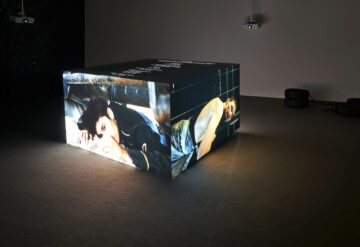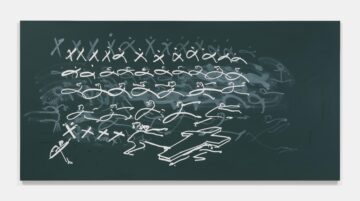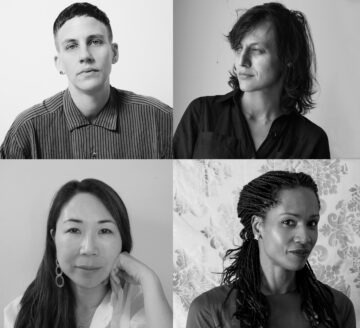Lucy Kim (b. 1978, Seoul, South Korea; based in Cambridge, MA) is an interdisciplinary artist who works across painting, sculpture, and biological media. In her hybrid works, she embraces distortion as a tool to deconstruct how we see what we see.
Over the last several years, Kim has worked in collaboration with scientists at the Broad Institute of MIT and Harvard and the National Autonomous University of Mexico to develop a new, experimental printing process using genetically modified bacteria cells that produce melanin directly on paper. With this work, Kim is exploring materially and conceptually what happens when images become visible through the same black and brown pigment that plays a key role in human coloration and appearance.
For her exhibition at the Henry, Kim is creating an installation of new melanin works made from images of vanilla plants, extending her broader investigations into the entangled relationship between bioengineering, visual appearance, and the social and cultural construction of race and perception. Vanilla is of particular interest to Kim for the role it plays in racial histories and global economies, past and present. Vanilla is the second most expensive spice in the world and cultivation is in primarily former colonized nations. Kim photographs her images on research farms in Florida, where scientists are breeding new varieties of the vanilla plant to offer alternate sources for domestic production. Her images of vanilla include beans, flowers, and a lab-grown albino plant, a specimen whose modified pigment helps scientists more immediately see the success of their experiments on other genes.
Kim’s prints will have a sculptural presence in the gallery, including one composition of over sixty overlapping and layered prints spanning the nearly full twenty-foot-high gallery walls. Using scale and repetition, Kim creates glitches in perception that scramble processes of legibility and recognition. Multiple prints of the same image vary in saturation and show the capricious outcome of a process using live cells, underscoring sight as an evolving process rather than a finite one. Kim’s work draws a through line from histories of botanical printmaking and related processes of classification to present day scientific invention, questioning the neutrality of these systems of visual cultural and knowledge production that mold the way we see others and ourselves.



![<p><em>Lucy Kim:</em> <em>Mutant Optics</em> [Installation view, Henry Art Gallery, University of Washington, Seattle. 2024]. Photo: Jueqian Fang.</p>](https://stage.henryart.org/assets/img/_smallImage/Henry-20240723-015.jpg)
